May 6, 2021
Locals serve up luxury tea butler experience in Ureshino City
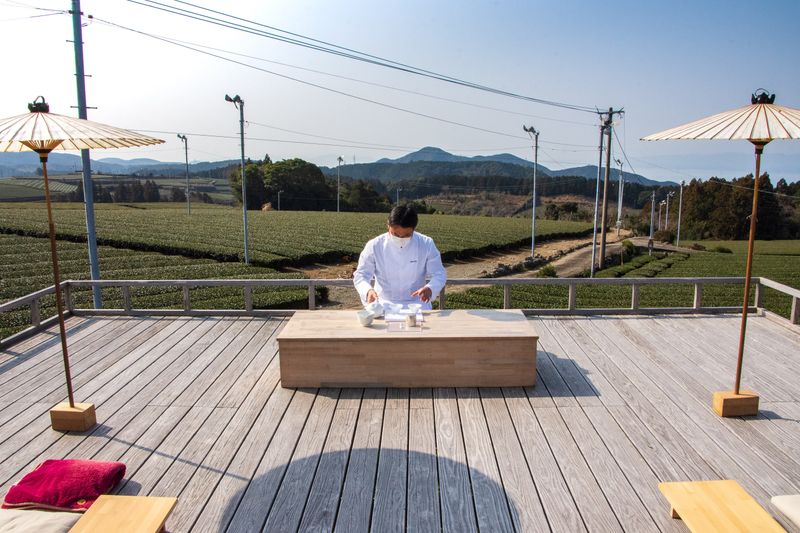
In the city of Ureshino, in Saga Prefecture on the island of Kyushu, local people and organizations are taking the serving of the region’s celebrated tea to interesting and often spectacular heights.
From the very opening of our “tea butler” experience in Ureshino the tone was set with a coming together of high-end luxury and the fruits born from an honest working of the local land.
In the mood-lit sophisticated surroundings of a luxury hotel bar, the tea butler had swapped plantation boots and farm tools for a brilliant white uniform and delicate crockery into which he poured the first of what would be many, and varied, cups of tea. This was check in, over a cup of tea, a biscuit and a run down of what to expect from the next day or so of the tea butler experience.
When it comes to tourism, it seems that there are three things on everybody’s lips in Ureshino - tea, the porcelain in which it is served, and onsen waters.
With a population of around 26,000, the city of Ureshino in Saga Prefecture’s southwest is one of the leading tea production areas in western Japan -- the cultivation of tea in the region is said to date back over 500 years. The local steamed tamaryokucha (unique for its curled leaves) is a regular feature among the winners of Japan’s National Tea Product Contest (zenkoku hinpyo-kai / 全国茶品評会).
Ureshino’s tea also puts the “tea” into the local “tea tourism” initiative through which individuals and organizations work together to promote not only locally produced teas but also Hizen Yoshida Yaki porcelain (which in part grew on the back of Ureshino’s tea production) and the local bihada-no-yu skin-beautifying onsen waters.
The tea tourism initiative includes experiences like the sawa “tea salon,” during which a local expert serves teas and confectionery to guests as they share with them their knowledge of the tea, while through a charin “tea cycling” scheme visitors can rent road bikes to explore tea-related locations around the city.
Perhaps the ultimate in the area’s tea tourism initiative though, is the new chahaku “tea butler” experience which puts a tea butler on hand to guide visitors through a tea-pairing dinner, tea ceremonies, and visits to other tea-related locations around the city during a one-night, two-day program which includes a luxury accommodation stay.
The tea butler experience itself pairs eye-popping luxury with the humble natural products cultivated from local natural resources, delivered by people who aren’t afraid of getting their hands dirty.
After the welcome drink we were guided to our room in the Suimeiso annex of local hotel Wataya Besso.
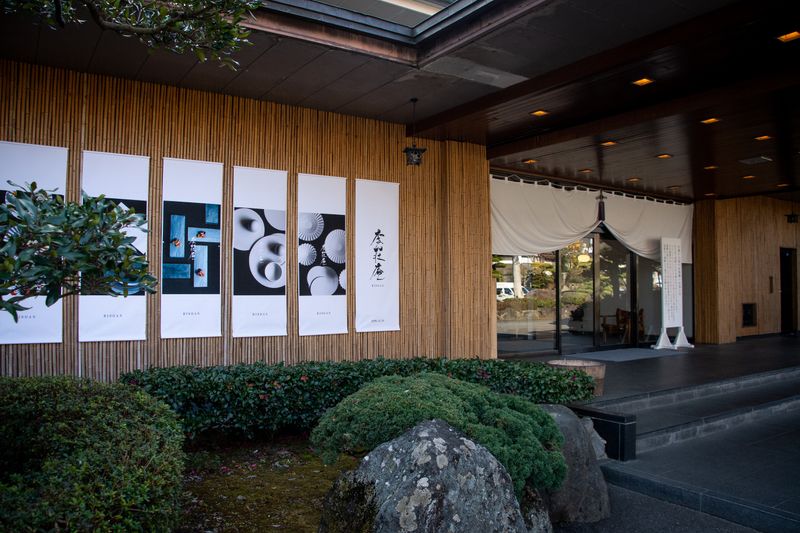
(Wataya Besso, Ureshino City)
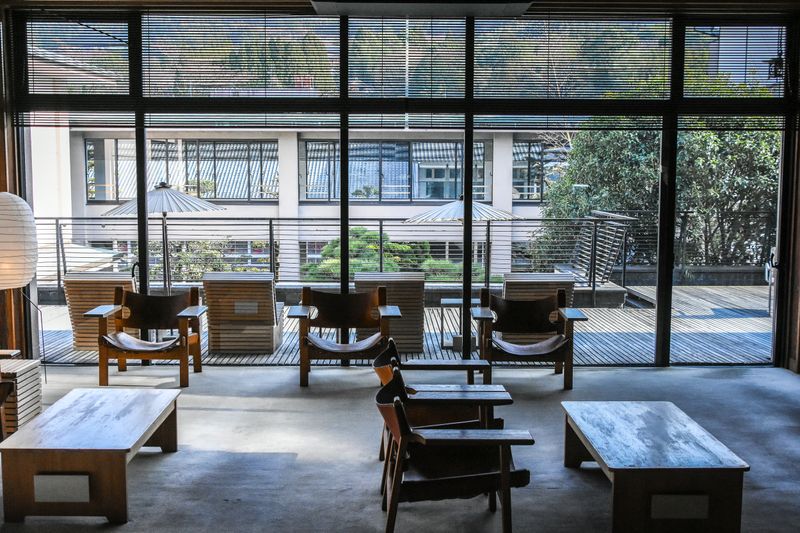
(Wataya Besso, Ureshino City)
The large and varied Wataya Besso complex straddles the Shiota River which flows past the southern edge of downtown Ureshino.
Occupying a plot on the south side of the river, the Suimeiso annex is surrounded by Japanese gardens. Of the seven rooms here, ours was the Senshin, a special guest room often reserved for dignitaries and celebrities. The Showa Emperor (Hirohito) stayed in the Senshin and the room looks set to host a shogi tournament game, later in 2021, featuring young sensation Sota Fujii.
Senshin is a spectacular space, built in the sukiya style with heavy use of cypress wood. The room features a lattice ceiling and a crane painting on one of the walls. The room’s two baths offer indoor bathing in a cypress bath and outdoor bathing with garden views.
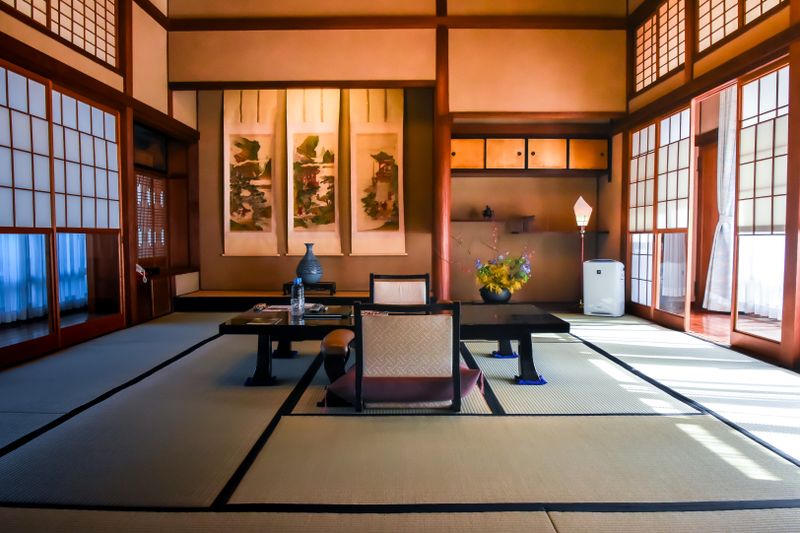
(Senshin room at Wataya Besso)
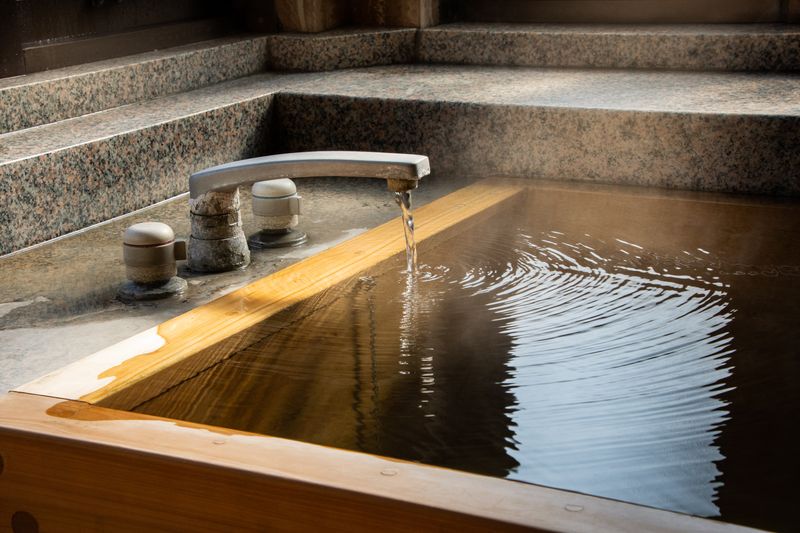
(Cypress bath, Senshin room at Wataya Besso)
The tea butler experience includes accompanied visits to local plantations on the mountainsides that surround Ureshino. In recent years tea houses and terraces have been established in four locations across the city. On the first day our tea butler, Mr. Nagao, accompanied us to one of these - the tenchadai open-air tea platform surrounded by the terraced tea plantations of local producer Soejimaen.
In a taxi on the way up to the plantation Nagao told us that he would often guide friends and acquaintances around Ureshino’s tea-related locations. Despite the “butler” role being a relatively new one for him, though, he has come to enjoy the experience, having overcome early nerves.
“As a tea farmer, I want people to know and be interested in tea,” he said.
“I want to talk (about tea) right from the beginning but I don't know how deeply I should talk about it. If I give people more information than they are looking for, I wonder if it might annoy them,” he joked.
On the tenchadai, under a bright sky and with a refreshing breeze blowing, Nagao served us tea as we knelt on zabuton cushions and looked over the city some 200 meters below.
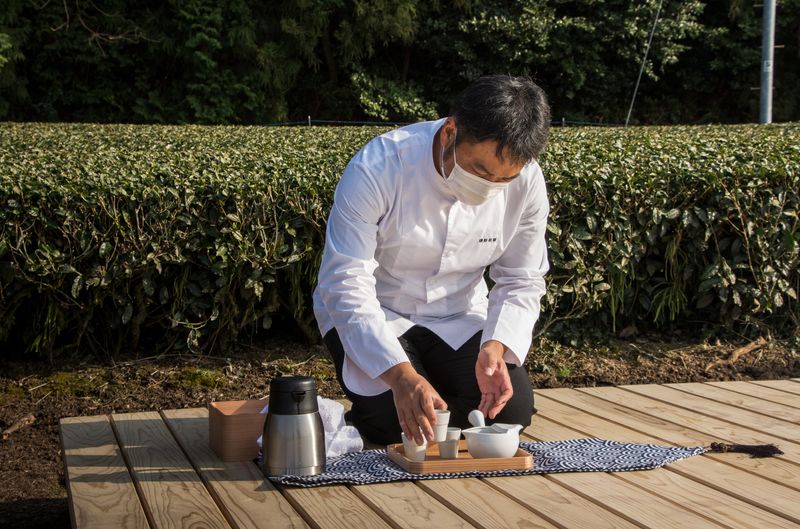
(A tea butler prepares tea at the tenchadai open-air tea platform, Ureshino)
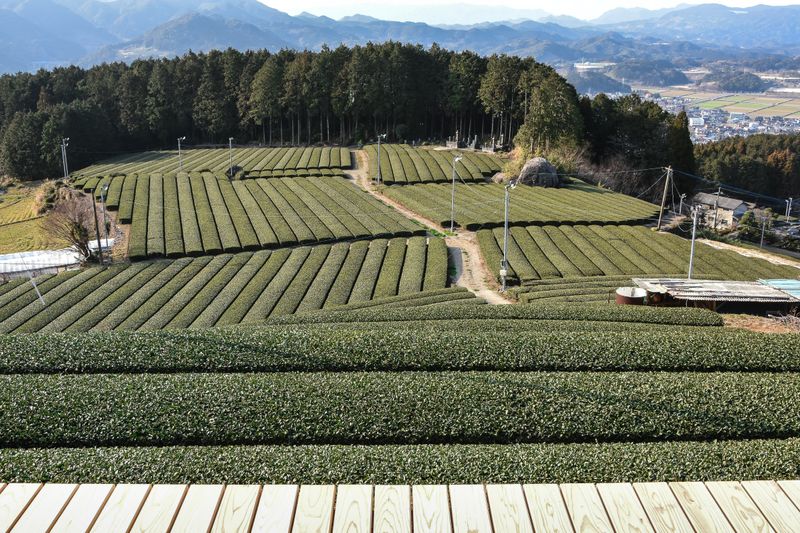
(Tenchadai open-air tea platform, Ureshino)
The tea butler experience would take us to another of the four tea house and terrace locations on the second day -- the chatou tea tower built high up in the Ikeda tea plantations. From the three-meter high platform we could enjoy views of Omura Bay in the distance to the southeast.
On the chatou we drank aracha zukuri, a kind of tea made by farmers onsite -- taken directly from harvest and processed, then roasted, to be made ready to drink.
“I want you to get a taste for the farmers' tea,” Nagao said. “Cheap and delicious.”
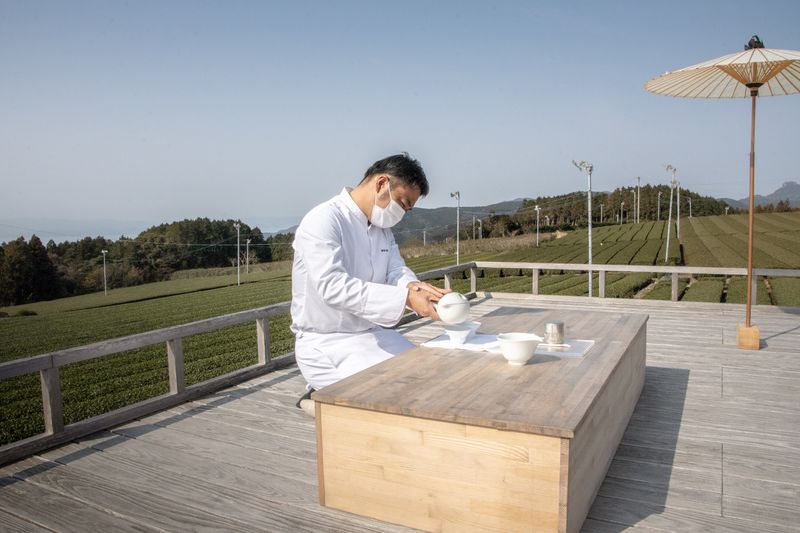
(Chatou tea tower, Ureshino)
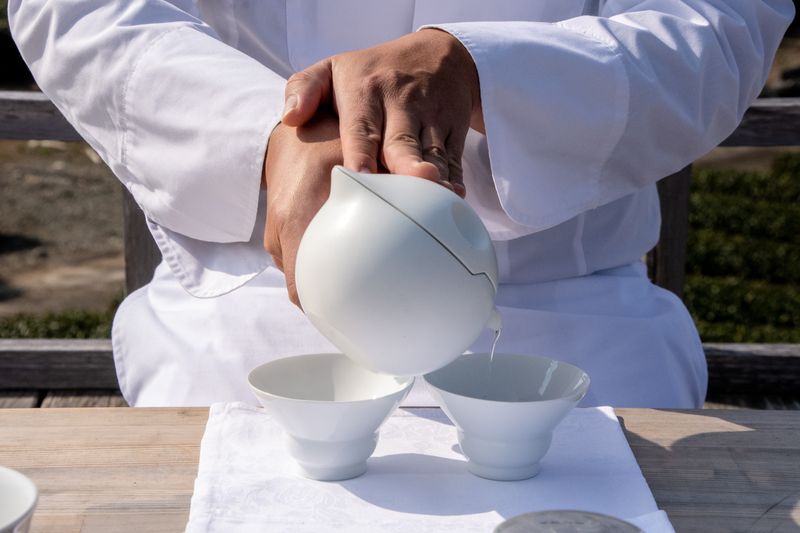
(Chatou tea tower, Ureshino)
It seemed a fitting choice reflective of the tea butler experience -- sat up there on the lofty luxury perch drinking cheap and cheerful farmers tea from Hizen Yoshida Yaki’s finest, surrounded by the very raw earth and plants that give rise to the experience in the first place.
As if to hammer home even further the contrast betting the luxury experience and the grassroots origins of it all, we would be invited down from the chatou to toil the earth with local tea farmers at a nearby plantation who were in the process of planting a new cycle of tea plants. Not part of the official experience, but a rewarding one nonetheless.
The best way to drink Ureshino’s tea is from locally produced Hizen Yoshida Yaki porcelain cups.
“Hizen” refers to the old province which straddled present-day Saga and Nagasaki prefectures and is today an area home to a number of porcelain production centers, Yoshida among them. Now part of present-day Ureshino City, the porcelain industry prospered in Yoshida under the encouragement of the Nabeshima lords who ruled Saga during the Edo Period.
After World War II many of Yoshida’s kilns began manufacturing tea ware, producing pieces featuring a polka dot pattern that became a symbol of Showa-era (1926 - 1989) dining tables across Japan.
The tea butler experience took us to get some first-hand insights into the Yoshida Yaki production process, visiting a local kiln and the Hizen Yoshida-Yaki Pottery Hall in the heart of Ureshino’s porcelain production area which is home to a collective of kilns around three kilometers southeast of central Ureshino.
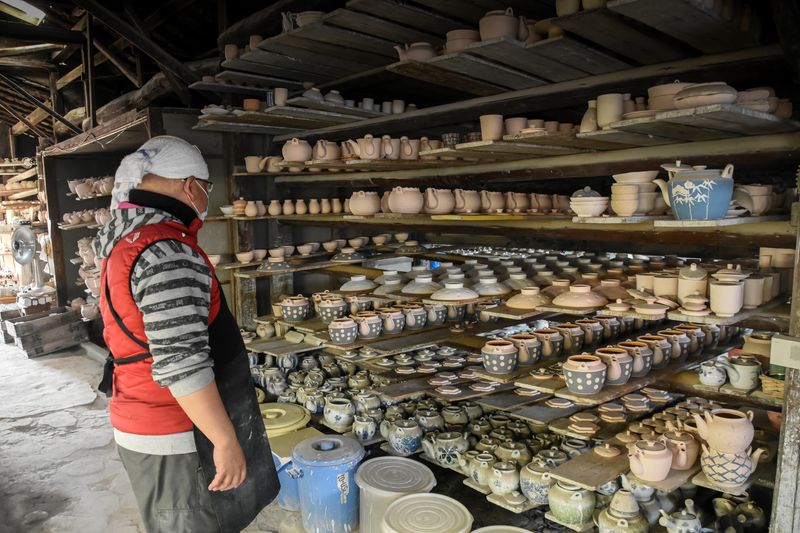
(Hizen Yoshida Yaki porcelain makers Soesen)
At the time of visiting some of the kilns in the area were participating in the “Ekubo to Hokuro” initiative. Ekubo and hokuro are affectionate terms that refer to inevitable imperfections that result from the largely manual, using natural materials, Yoshida Yaki production processes. Through the “Ekubo to Hokuro” initiative these imperfections were being celebrated and showcased at the onsite stores of participating kilns.
Of the tea butler experiences, the “tea pairing dinner” was perhaps the most spectacular, and not least because dinner was served in our Senshin room back at Wataya Besso, which was spectacular enough already.

(Tea pairing dinner, Wataya Besso)
During the at least eight-course dinner (we lost count) Nagao entered the room on a number of occasions to serve teas paired with some of the dishes. Despite the heavy sense of Japanese tradition in the room and in the dinner courses, the people behind the tea butler experience revealed a sense of fun with tea pairings that included a carbonated tea served in a spectacular wine glass and, for one of the courses, not a tea to drink but one to sample the aroma of courtesy of tea leaves being gently heated at the table.
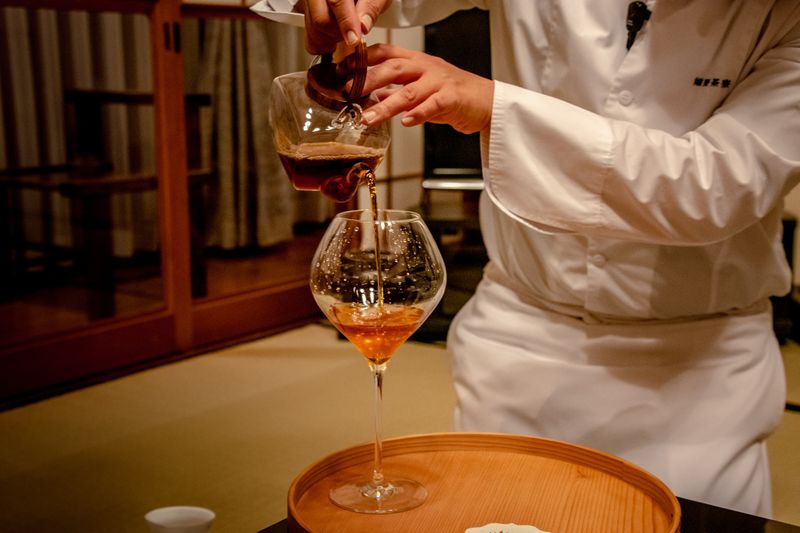
(Tea pairing dinner, Wataya Besso)
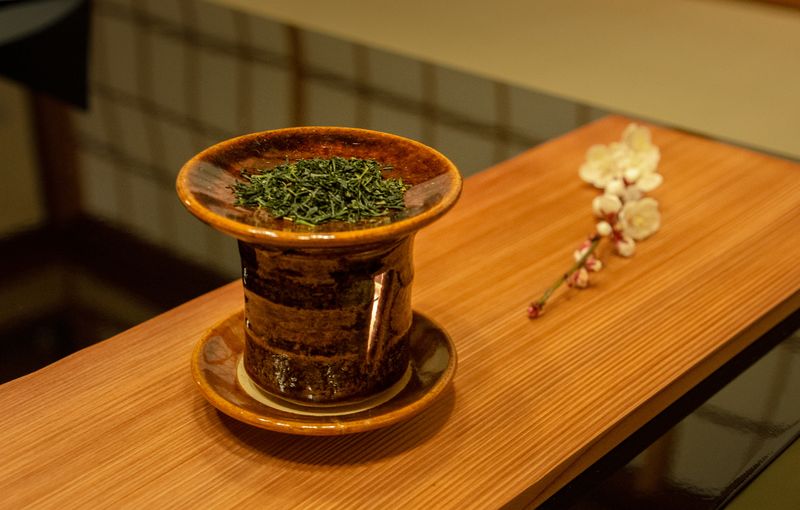
(Tea pairing dinner, Wataya Besso)
Without doubt, there is a lot of tea to be drunk during the tea butler experience. The introduction of aromas and alternative serving methods will likely be welcomed by those who can have too much of a good thing.
The sense of fun to be had with tea continued after dinner when we were invited to retire to the hotel bar for tea-inspired drinks and cocktails.
“Saryo and Bar” is held at Wataya Besso’s sophisticated bar space in the Savour de Suimei lounge and riverside terrace, a facility largely aimed at guests staying in the Suimeiso annex. A collaboration with local tea producer Soejimaen the “Saryo and Bar” menu included a green tea beer and a houjicha highball, among other tea-inspired beverages.
The air of sophistication, the neat rows of plants, the food pairings and fancy glasses make comparisons of Ureshino’s tea butler experience with wine tasting and vineyard tours in other parts of the world somewhat inevitable, and the “Saryo and Bar” delivers the otherwise-lacking alcohol content.
“In Japan, the famous places (for tea) are Shizuoka, Kagoshima, Yame in Fukuoka, but really, starting as far north as Ibaraki or maybe even Niigata, most of the prefectures south of that have their own tea,” Nagao explained during our tour.
“It’s like in Europe where some regions have a famous brand of wine and they have tours where people can go around tasting and comparing wines. In Japan, we could have a similar thing with tea tours.”
If the wine-tasting experience could be said to be something requisite of a sophisticated palate, a taste for the finer things in life perhaps, the Ureshino tea butler experience surely delivers this and spectacularly more. In between being bowled over by the luxury though, the truly discerning palate will surely find the greatest joy in the natural elements of people and local produce that serve up the experience.



0 Comments